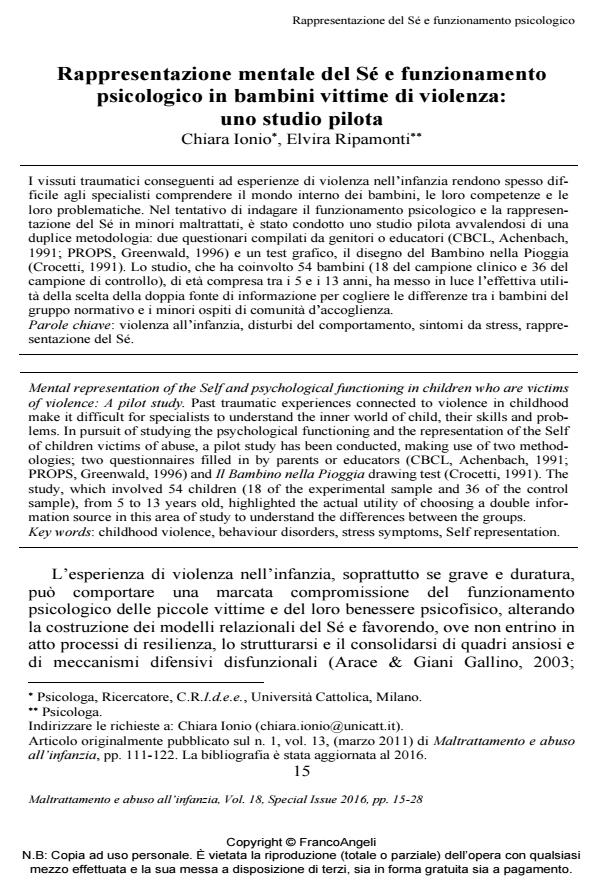Mental representation of the Self and psychological functioning in children who are victims of violence: A pilot study
Journal title MALTRATTAMENTO E ABUSO ALL’INFANZIA
Author/s Chiara Ionio, Elvira Ripamonti
Publishing Year 2016 Issue 2016/2 suppl.
Language Italian Pages 14 P. 15-28 File size 194 KB
DOI 10.3280/MAL2016-S02002
DOI is like a bar code for intellectual property: to have more infomation
click here
Below, you can see the article first page
If you want to buy this article in PDF format, you can do it, following the instructions to buy download credits

FrancoAngeli is member of Publishers International Linking Association, Inc (PILA), a not-for-profit association which run the CrossRef service enabling links to and from online scholarly content.
Past traumatic experiences connected to violence in childhood make it difficult for specialists to understand the inner world of child, their skills and problems. In pursuit of studying the psychological functioning and the representation of the Self of children victims of abuse, a pilot study has been conducted, making use of two methodologies; two questionnaires filled in by parents or educators (CBCL, Achenbach, 1991; PROPS, Greenwald, 1996) and Il Bambino nella Pioggia drawing test (Crocetti, 1991). The study, which involved 54 children (18 of the experimental sample and 36 of the control sample), from 5 to 13 years old, highlighted the actual utility of choosing a double information source in this area of study to understand the differences between the groups.
Keywords: Childhood violence, behaviour disorders, stress symptoms, Self representation
Chiara Ionio, Elvira Ripamonti, Rappresentazione mentale del Sé e funzionamento psicologico in bambini vittime di violenza: uno studio pilota in "MALTRATTAMENTO E ABUSO ALL’INFANZIA" 2 suppl./2016, pp 15-28, DOI: 10.3280/MAL2016-S02002